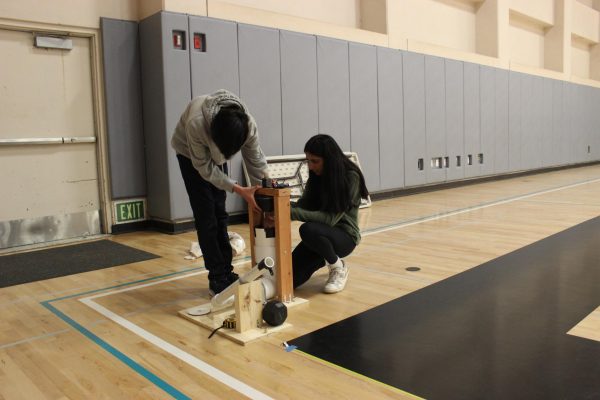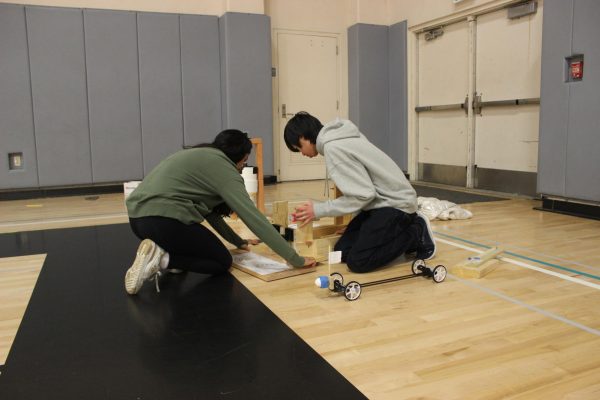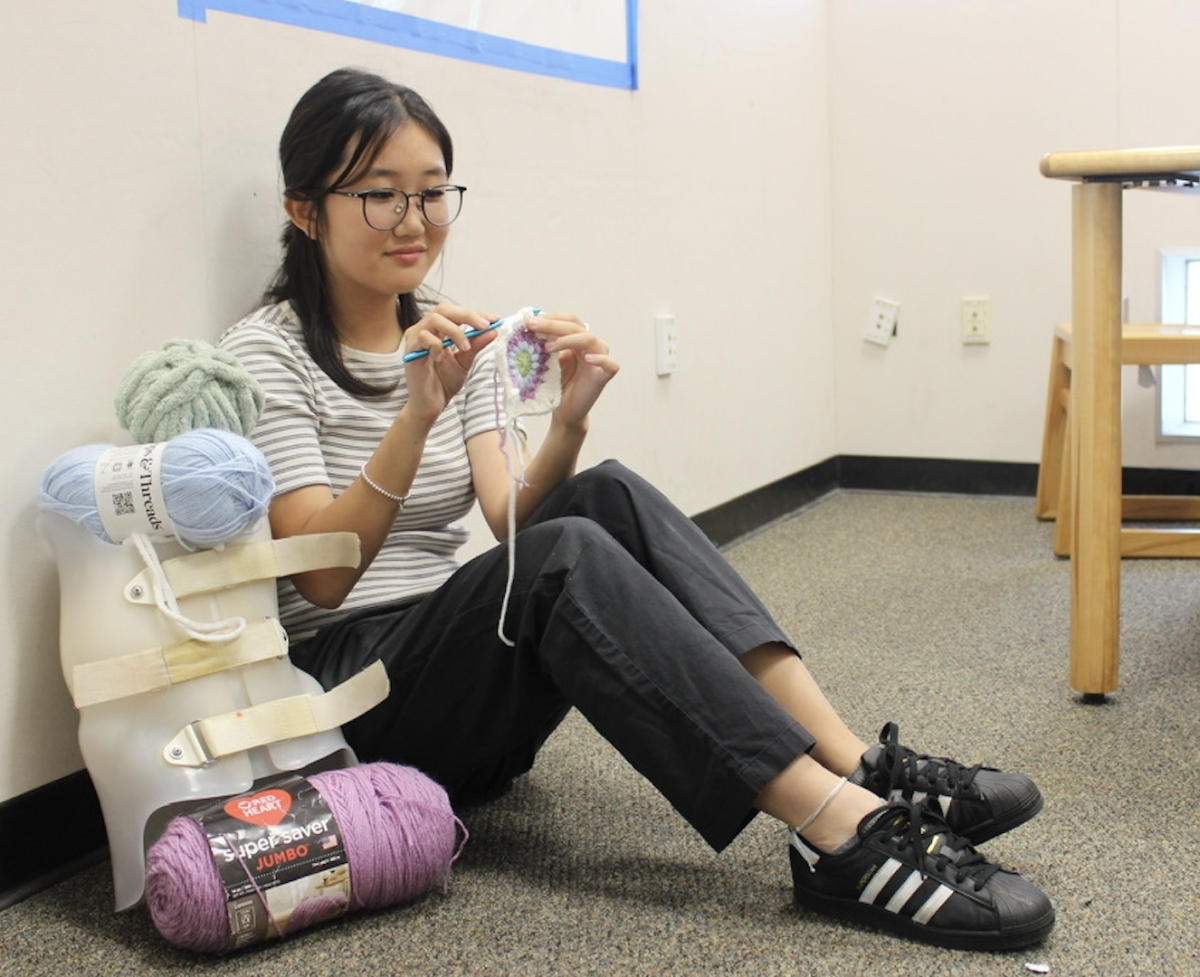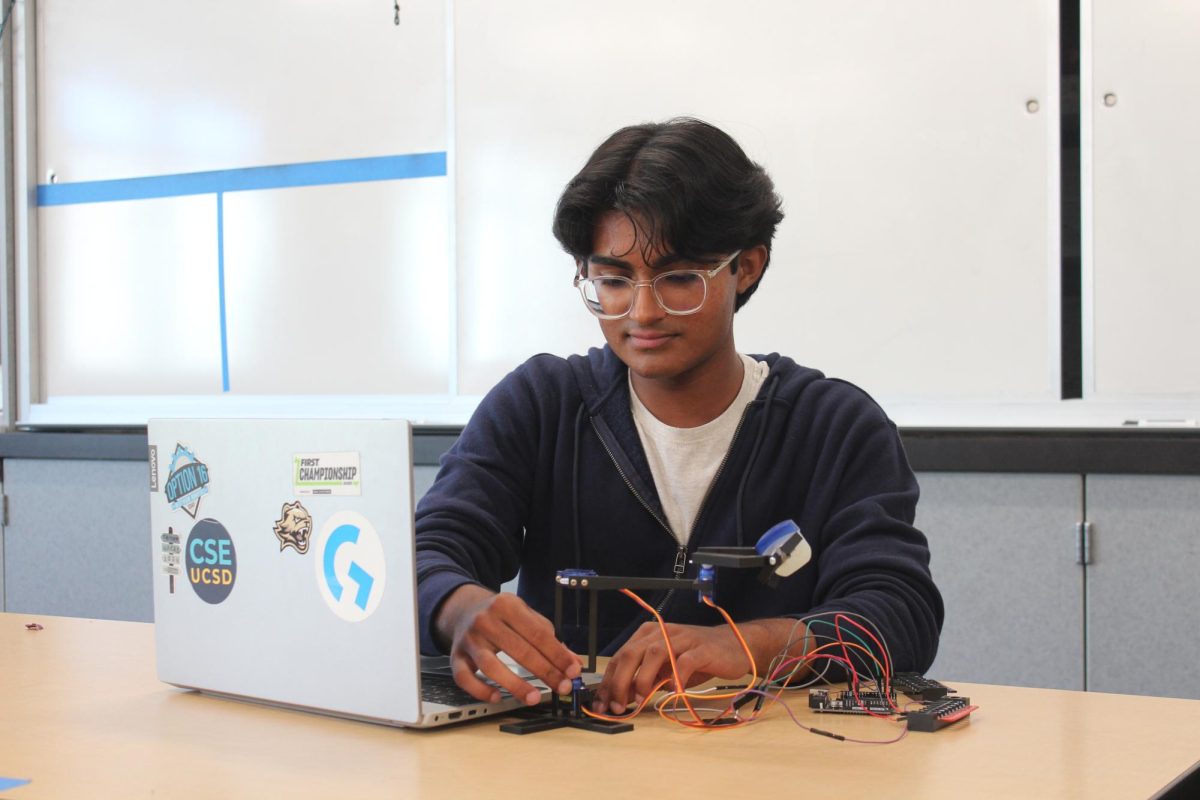Whether the goal is to launch a ping-pong ball into a bucket, propel a vehicle that carries an egg, or build a tower that holds the most weight, Ryan Bui (11) and Shayna Mehta (11) are no strangers to trial and error. When precision is key to winning, just one small tweak or change in a variable can cause a vast difference in their devices’ performance.
This year, Bui and Mehta are partners for three Science Olympiad build events: Air Trajectory, Scrambler, and Towers. Each event requires participants to build a device under specific parameters to meet a unique objective. On March 16, at the Science Olympiad San Diego Regional competition, Bui and Mehta brought home two medals: second in Scrambler and sixth in Air-Trajectory.
Bui and Mehta have both been competing in Science Olympiad since sixth grade and have preferred the hands-on nature of the competition’s engineering events as opposed to the more academic study events.
“For me, even at a young age, I always liked building things and making things,” Bui said. “When I found out from my older brother that you can do these building events in Science Olympiad, I was interested in that. It is very relaxing, and for some reason it relieves stress, even though it’s a very hard process.”
One of Bui and Mehta’s events, Air Trajectory, requires them to build a projectile device that launches a ping-pong ball into a bucket a certain distance

away. The distance is unknown to the participants until the morning of the competition, and teams must be able to calibrate their device to accurately hit the target between two and eight meters away.
Another event that the two compete in is Scrambler, where they build a vehicle powered by a falling mass that travels a certain distance and curves around a bucket, all while carrying an egg.
Bui and Mehta spend up to three hours in their weekly sessions testing their devices with Bui’s father, who is a mechanical engineer and guides them in improving their builds. Though the process of perfecting each device is meticulous and requires many trials, the final results make the procedure worth it in the end.
“The satisfaction of seeing it work at the competitions and knowing that all of these different tests we did throughout the season came to fruition [is rewarding],” Mehta said.
Bui and Mehta’s third and favorite event is Towers, which requires them to build the lightest wooden tower possible to hold the most amount of weight.
“Towers is fun because it’s a little bit more like trial and error, and you’re constantly building it. Whereas for Air Trajectory and Scrambler, you build it once and make small tweaks,” Mehta said.
The hours the two students have spent together building and testing their devices have cultivated a dynamic that helps with their synergy.
“When you have the three events, you also get to know each other more and what you’re good at. That helps because you can coordinate a lot better,” Bui said.
Being partners for many events also allows for Bui and Mehta to work more seamlessly through their ideas.
“I think it helps to have the same partner for a lot of events because we bounce off ideas, and if something else isn’t working, we can start working on a different event,” Mehta said.
Despite their accomplishments at the Regional competition, the two students felt the pressure of their environment when competing.

“I think the time crunch was the biggest issue,” Mehta said. “And then just knowing this is your one shot to do it kind of stresses you out and you get more frantic.”
On top of the time-restraint pressures that Bui and Mehta experienced, they also felt the pressure of the competition.
“It’s also the fact that there’s a lot of other people watching too,” Bui said. “Not just coaches or other students, but other schools, the event supervisors obviously, and then any other parents.”
The two are now advancing to compete at the Southern California States Competition tomorrow. Bui and Mehta hope to take what they have learned from Regionals to improve their performance at States by learning to work under a high-pressure environment, taking more risks when competing, and being inspired by the designs of other schools to better their own work.
Although the two placed well in the Regional competition, Bui and Mehta said that they still have lots to improve on and hope to perform even better in the next round.
“We can do better,” Mehta said. “We have our sights set for better things for States.”





